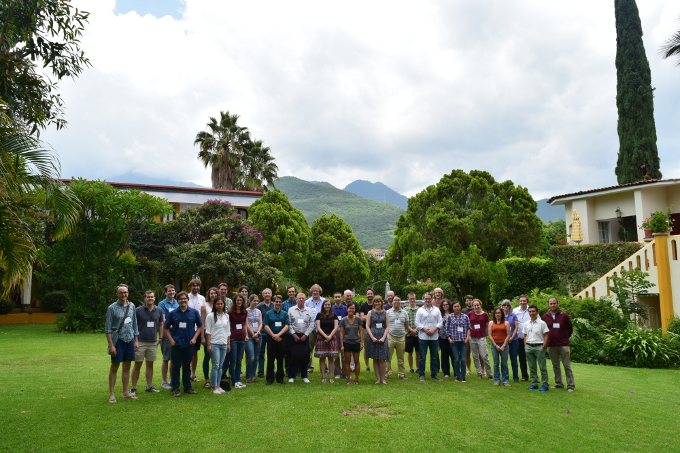Thirty Years of Floer Theory for 3-Manifolds (17w5011)
Organizers
Robert Lipshitz (University of Oregon)
Jen Hom (Georgia Tech)
Daniel Ruberman (Brandeis University)
Description
The Casa Matemática Oaxaca (CMO) will host the "Thirty Years of Floer Theory for 3-Manifolds" workshop from July 30th to August 4th, 2017.
Roughly speaking, topology is the study of scale-invariant properties
of spaces. Three-dimensional topology is about spaces with the same
number of dimensions as our own, but which may differ in other
ways. One key family of questions have to do with what mathematicians call `surgery',
which means creating or removing donut-shaped wormholes. It has been
known since work of Lickorish in the the 1960's that if you can create
arbitrarily many donut-shaped wormholes, you can turn any
3-dimensional (topological) space into any other. A more recent
discovery is that any (nontrivial) donut-shaped wormhole does, indeed,
change the shape of space in a topologically nontrivial way: it
creates new loops that cannot be shrunk to points. (This was the
`Property P conjecture', proved in 2003 by Kronheimer-Mrowka.) Some
questions that are still being pursued include: what spaces can be
created with just one donut-shaped wormhole? What donut-shaped
wormholes give particularly simple spaces (e.g., `lens
spaces')? Can two different donut-shaped wormholes have the same effect?
(The last of these is called, in a slightly tongue-in-cheek way, the
`cosmetic surgery conjecture': the difference between the results of
the two surgeries (creations of wormholes) would be merely cosmetic.)
A key strategy for answering these questions is a technique introduced
by Andreas Floer, which now bears his name: `Floer homology'. Floer
homology involves using dynamical properties of spaces, like what
kinds of periodic motions (like that of the planets) spaces spawn,
or what kinds of fields (in the sense of the electric field)
spaces support, to determine properties of the spaces. (This is mirror
to the usual strategy in mathematics, which is to use properties of
the underlying space to deduce properties of differential equations on
that space.) This conference seeks to further explore Floer homology
methods, its relations to other techniques in 3-dimensional topology,
and its applications to donut-wormhole (surgery) questions.
The Casa Matemática Oaxaca (CMO) in Mexico, and the Banff International Research Station for Mathematical Innovation and Discovery (BIRS) in Banff, are collaborative Canada-US-Mexico ventures that provide an environment for creative interaction as well as the exchange of ideas, knowledge, and methods within the Mathematical Sciences, with related disciplines and with industry.
The research station in Banff is supported by Canada's Natural Science and Engineering Research Council (NSERC), the U.S. National Science Foundation (NSF), Alberta's Advanced Education and Technology, and Mexico's Consejo Nacional de Ciencia y Tecnología (CONACYT). The research station in Oaxaca is funded by CONACYT.






